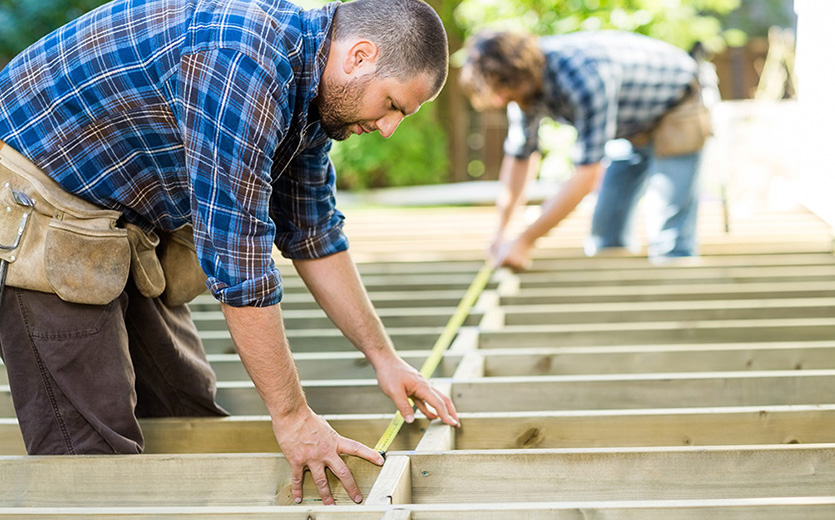
Once you’ve made up your mind to embrace composite material for your deck build, here comes the next step-installation. Luckily, the installation of composite decking is similar to how you would work with wood or can be a lot more friendly to you. Here are some hot tips for Installing Composite Decking.
How the Installation of Composite Is Similar to Installing Wood?
- The joist spacing for composite decking is 14-16’’, similar to the ones for wood.
- Some woodworking tools are compatible with composite material.
- Labor costs for composite and wood materials are similar.
Work out a Plan Before You Jump into It
Planing before installation is something information that most people neglect. Start by drawing up a sketch for your deck build and check with your local building authority for any permits and requirements. Make sure your take into consideration the layout of furniture added later on and adjust your substructure accordingly. If you are not confident with your skills, you can always consult or hire a professional to help you with the work.

Carefully Select the Right Tools
Good tools are a prerequisite to the successful execution of a job. If you don’t have any at your disposal, you can easily find a local hardware shop to rent and purchase some. Here’s a list of common tools we use to install composite decking.
| Protective Equipment | Safety Glasses, Gloves, Masks… |
| Saws | Miter Saw and/or Jigsaw, or Circular Saw |
| Power Tools | Power Drill, Impact Drill, Screw Gun… |
| Hand Tools | Rubber Mallet, Tape Measure, String Line… |
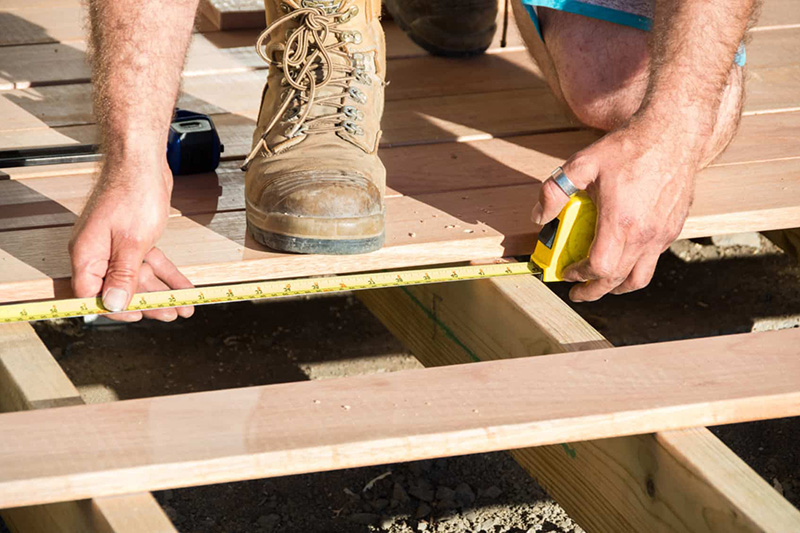
Make Sure You Have a Proper Substructure
A properly built and maintained substructure is the key to the longevity of your deck. Make sure you choose the right type and build your substructure based on the needs of the application. A qualified substructure should always ensure good ventilation, drainage, and sturdy support for decking boards, and meet code.
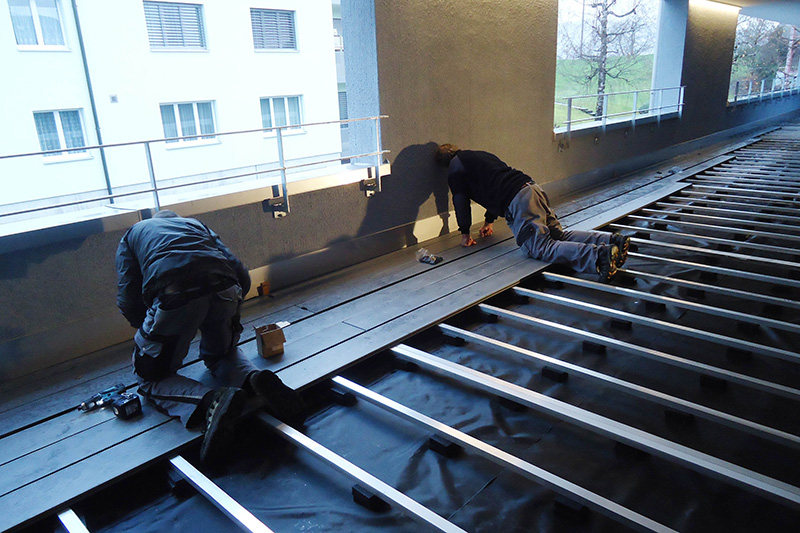
Important considerations when building a substructure:
- If you live in a cold climate, use frost-proof footings for your posts.
- Make sure you have the proper joist spacing.
- Double joists are necessary where decking boards meet end-to-end.
- In areas where heavy point loads are expected, add additional bridging or reduce joist spacing.
Be Aware of Board Contraction and Expansion
Decking boards will experience natural expansion and contraction as the temperature changes. Unlike timber, composite decking boards will contract and expand across their length rather than width. That’s why you should never hold your boards tightly against each other.
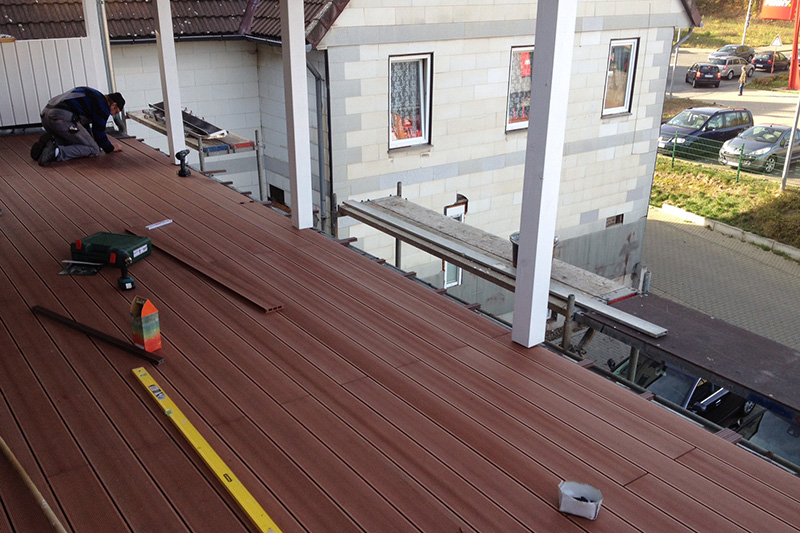
To counter this effect and prevent deformation and warp, the gap between decking boards must be reserved. The gap reserved mainly depends on the length of boards and local climate. The larger the temperature swing, the bigger the expansion gap. You’d better avoid installing your composite decking during the coldest and hottest period of the day. Follow these tips for Installing composite decking. That way you’ll be able to better find a suitable gap for your decking boards.

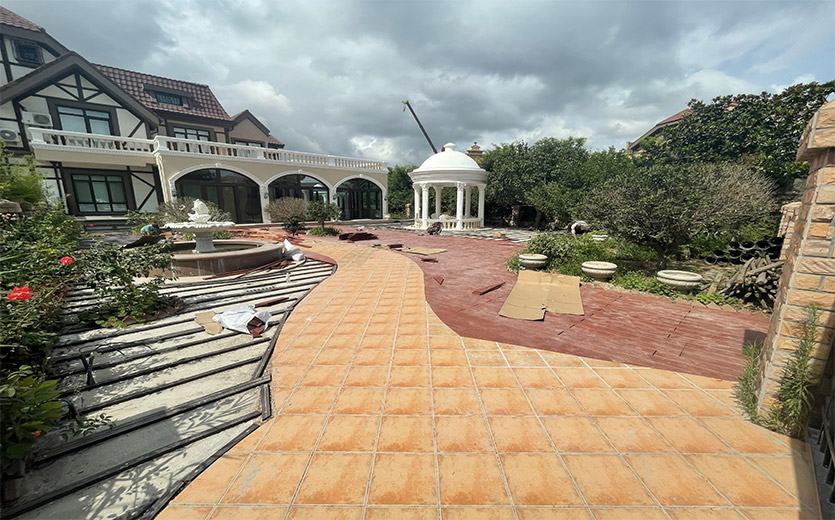
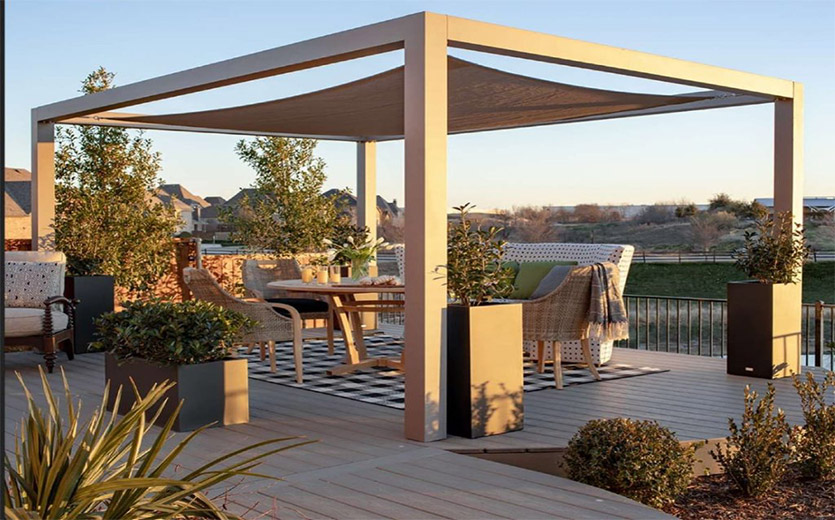
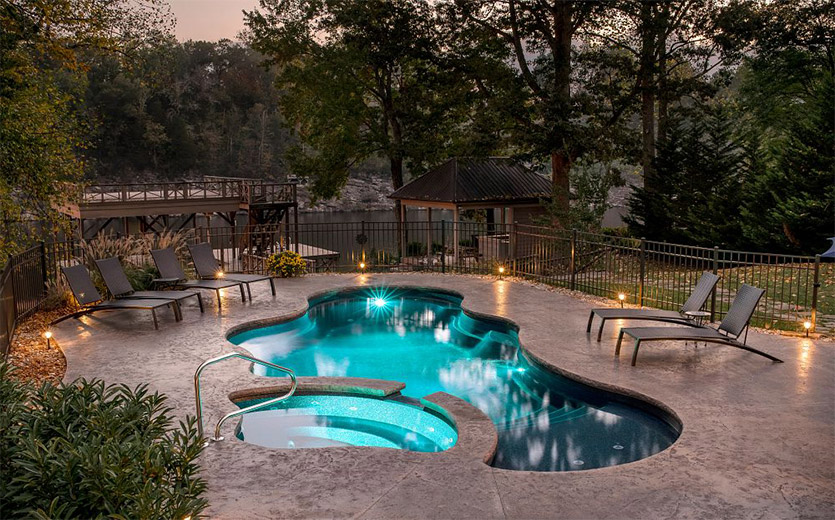
Post a Comment